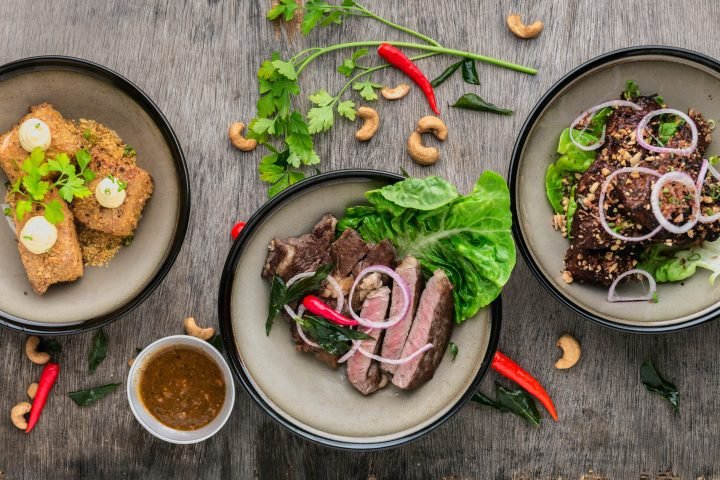The culinary world is a dynamic and ever-evolving landscape, where new trends and innovative techniques are continually reshaping the way we think about food. One of the most exciting and boundary-pushing trends in recent years is fusion cuisine—a culinary art form that blends elements from two or more distinct culinary traditions, creating something entirely new and uniquely delicious. Fusion foods are where diverse flavors, ingredients, and cooking methods meet to offer a fresh, modern take on traditional dishes, turning the ordinary into the extraordinary.
In this article, we will explore the fascinating world of fusion foods, tracing their rise in the global culinary scene, highlighting some of the most exciting combinations, and offering insights into how you can bring fusion food into your own kitchen.
What Is Fusion Cuisine?
At its core, fusion cuisine is about combining different culinary traditions and flavors to create new dishes that offer a harmonious mix of tastes, textures, and cooking techniques. It’s an approach that encourages creativity, experimentation, and the breaking down of traditional culinary boundaries.
Fusion cuisine can take many forms—whether it’s blending cooking methods, infusing spices from one culture into the dishes of another, or combining ingredients that are typically never seen together. It’s about crafting a dish that celebrates multiple food cultures and introduces new ways to experience them.
Some fusion dishes are born out of necessity, like immigrants adapting traditional recipes to available ingredients in new countries. Others are born from pure culinary curiosity and the desire to push the boundaries of flavor.
The History and Rise of Fusion Foods
Fusion cuisine isn’t a modern invention—it’s been happening for centuries as cultures have interacted and shared their culinary traditions. Historical examples of fusion food include:
- Marco Polo’s exploration of China: It is said that Marco Polo introduced pasta to Italy from China, leading to the birth of Italian pasta dishes.
- Colonial influences: During the colonial period, European settlers brought spices and cooking techniques to the Americas, resulting in hybrid dishes that combined European and indigenous ingredients.
However, the fusion food movement, as we know it today, began gaining significant popularity in the late 20th century, especially in the 1980s and 1990s. Chefs began blending traditional culinary techniques with modern sensibilities, resulting in fresh and exciting combinations. Iconic chefs like Wolfgang Puck and Roy Choi were pioneers in this movement, popularizing dishes like California-style pizza and Korean tacos, which introduced global flavors to a new audience.
Today, fusion cuisine is a staple in many cities, with restaurants around the world combining unexpected ingredients to create innovative dishes that keep diners coming back for more.
Why Are Fusion Foods So Popular?
Several factors have contributed to the popularity of fusion cuisine in the modern food scene:
1. Globalization and Cultural Exchange
As the world becomes more interconnected through travel, migration, and communication, the sharing of food traditions has accelerated. Globalization has led to an increased interest in exploring diverse culinary cultures. Fusion foods offer a way to experience multiple global flavors in one dish, appealing to people’s curiosity about different cuisines.
2. Creativity and Innovation
Fusion cuisine is a playground for chefs and home cooks alike. It encourages creativity and experimentation, allowing cooks to mix traditional and modern techniques, ingredients, and presentations. The excitement of trying new combinations and flavors is one of the key factors that drive the popularity of fusion foods. It allows chefs to challenge conventional ideas about food and offer diners unique experiences.
3. Diverse Palates
In today’s multicultural societies, diners have grown accustomed to a range of global flavors. Fusion foods appeal to diverse tastes by offering dishes that combine familiar ingredients and flavors with something new and exciting. For example, someone who loves Mexican food might be intrigued by a Korean-Mexican fusion taco, blending the familiar flavors of tacos with the bold, savory taste of Korean BBQ.
4. Elevated Dining Experience
Fusion cuisine often provides a more sophisticated, elevated dining experience. By combining the best elements of various culinary traditions, fusion foods can offer a balance of textures, flavors, and techniques that create a more complex and exciting dish. Whether it’s the richness of French cooking combined with the spices of Indian cuisine or the freshness of Mediterranean ingredients with the heartiness of American comfort food, fusion cuisine creates meals that tantalize the taste buds.
Popular Fusion Food Combinations
Fusion cuisine brings together a wide array of exciting combinations. Here are some of the most popular and delicious fusion dishes that showcase how culinary traditions from around the world can be seamlessly blended to create innovative flavors:
1. Korean BBQ Tacos (Korean-Mexican Fusion)
One of the most beloved fusion dishes, Korean BBQ tacos combine the savory, marinated meats of Korean BBQ (such as bulgogi or galbi) with the classic Mexican taco. The dish typically includes a soft tortilla filled with grilled meat, topped with kimchi, cilantro, pickled vegetables, and spicy sauces. The result is a perfect blend of smoky, tangy, spicy, and savory flavors—giving you the best of both worlds.
2. Sushi Burritos (Japanese-Mexican Fusion)
Sushi burritos take the concept of sushi and combine it with the portability of a burrito. The dish is a larger, sushi-style roll that is packed with fresh ingredients such as fish, avocado, cucumber, and sometimes spicy mayo or wasabi, all wrapped in a sheet of seaweed. Think of it as the perfect combination of Japanese sushi and the convenience of a burrito.
3. Currywurst Poutine (German-Canadian Fusion)
Poutine, a Canadian comfort food, is made of French fries topped with cheese curds and gravy. But when combined with currywurst—Germany’s famous sausage served with a curry-flavored ketchup—it takes on a whole new level of flavor. The spiciness of the curry ketchup paired with the rich gravy and cheese curds creates a unique and indulgent fusion dish.
4. Ramen Burgers (Japanese-American Fusion)
Ramen burgers are an innovative fusion dish that swaps out the traditional burger bun for two crispy ramen noodle patties. Inside, you’ll find a juicy burger patty topped with fresh vegetables and a savory sauce. This hybrid dish combines the best of two comfort foods—ramen and burgers—into one flavorful creation.
5. Churro Waffles (Mexican-Belgian Fusion)
Churros, the beloved cinnamon-sugar-coated treat from Mexico, are reimagined as waffles in this sweet fusion creation. The result is a crispy, fluffy waffle with the signature flavors of churro dough. Topped with chocolate sauce, whipped cream, or even fresh fruit, churro waffles are the perfect dessert or breakfast treat that combines the best of Mexican and Belgian cuisine.
6. Tandoori Chicken Pizza (Indian-Italian Fusion)
Tandoori chicken, a dish from Indian cuisine known for its spiced, marinated chicken cooked in a tandoor oven, gets a modern twist when placed on a pizza crust. Topped with a rich tomato sauce, mozzarella, and fresh herbs, the tandoori chicken pizza brings together the bold flavors of Indian cuisine with the comfort of Italian pizza.
How to Create Your Own Fusion Dishes
If you’re excited to try your hand at fusion cuisine, here are a few tips to help you get started:
- Start with the basics: Choose two cuisines that you enjoy and think about how their flavors could complement each other. You might want to blend an Asian-inspired dish with something Mediterranean or combine Italian pasta with Mexican flavors.
- Balance flavors: Fusion cuisine is all about balancing different flavors—sweet, salty, sour, and umami. Ensure that the components you combine create a harmonious dish that isn’t overwhelming in one flavor.
- Be creative with ingredients: Mix up your typical ingredient list. For example, instead of traditional bread for a sandwich, try using sushi rice or a naan flatbread.
- Keep the textures in mind: One of the fun parts of fusion cooking is playing with different textures. Combine crunchy, creamy, and savory elements to create a satisfying mouthfeel.
Conclusion
Fusion foods are the culinary equivalent of a creative masterpiece—where two or more culinary traditions meet to form something new, exciting, and full of flavor. Whether you’re indulging in a Korean BBQ taco, savoring a ramen burger, or enjoying the sweet crunch of churro waffles, fusion cuisine brings together the best of both worlds, offering endless possibilities for flavor experimentation.
As fusion foods continue to captivate food lovers around the globe, they serve as a reminder of the beauty of culinary diversity. They bring cultures together, break down culinary boundaries, and encourage creativity in the kitchen. So, the next time you’re craving something different, why not take a culinary adventure and dive into the exciting world of fusion foods? Your taste buds will thank you!










